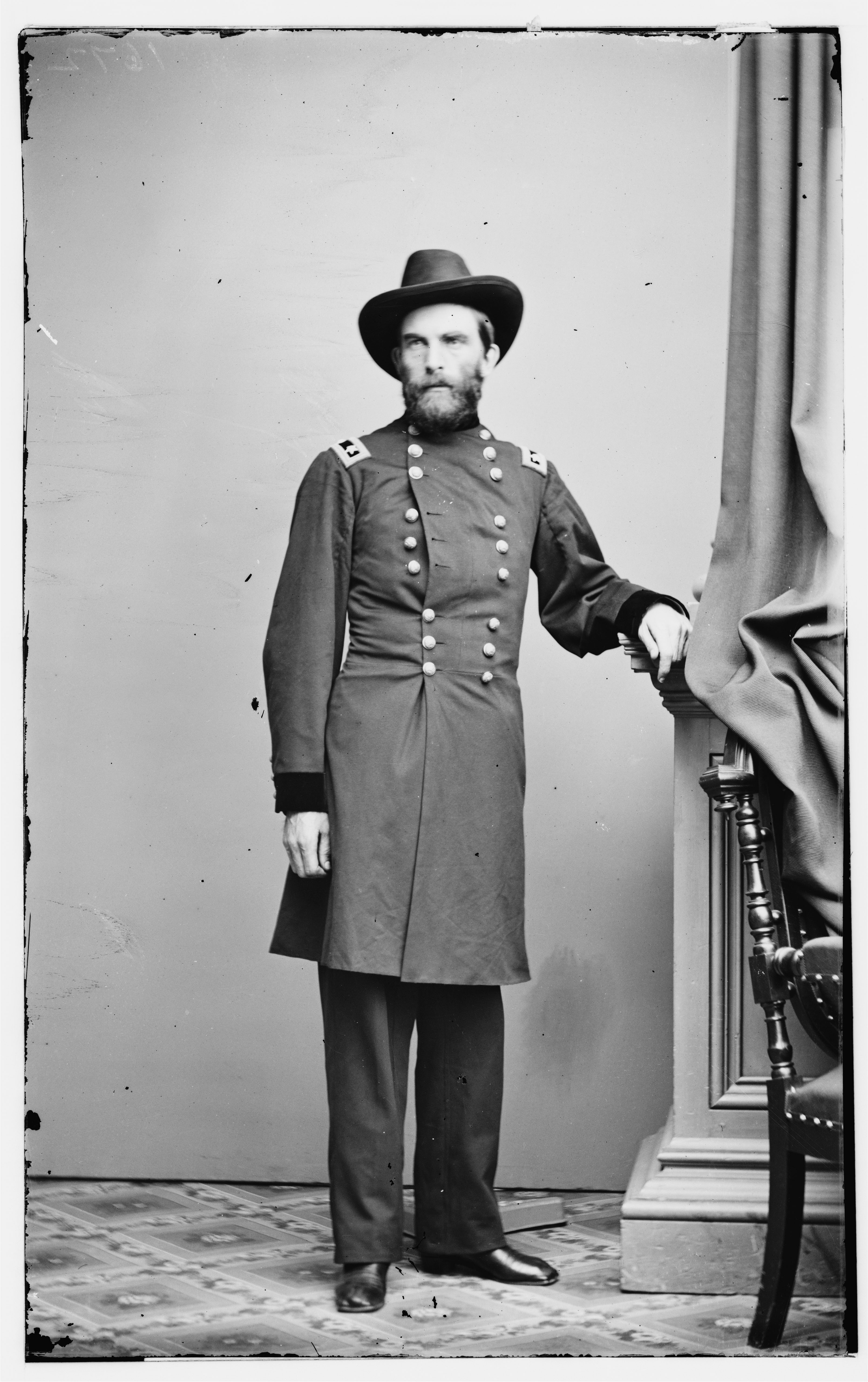View our Civil War Sequicentennial site
Grenville M. Dodge was that rare logistical genius. Though not well known in local history, as a Union Army officer he helped marshal thousands of laborers to rebuild bridges, scale chasms and reopen critical railroad and telegraph lines to support the Union Army before and after the Chattanooga Campaign during the fall of 1863.
In addition to fighting and engineering successfully in the Civil War, he conferred with President Abraham Lincoln on westward expansion, and later oversaw much of the building of the Transcontinental Railroad.
Born in Danvers, Mass., in 1831, Dodge early on displayed a temper but learned to channel it in a positive manner. At age 14, he was introduced to Fredrick Lander, a gifted young surveyor. Taken under his wing, Dodge proved quite proficient at surveying and made that his life's work. He graduated from Norwich University in Vermont with a degree in civil engineering in 1851. A contemplative young man, Grenville saw the potential of a railroad reaching to the west coast.
Moving westward in the mid-1850s, Dodge began working with another gifted surveyor, Peter Dey, in locating the best rail route across the state of Iowa. Native Americans called Dodge "Level Eye" because of his ability to peer across a valley or mountainside and plot the best course for a rail line. His aptitude as an engineer grew exponentially. Other doors began to open.
Dodge became involved in an overland freighting company and co-founder of a banking firm. He established a rapport with a rising political star, Abraham Lincoln. Both saw the need for rails to transport people and material to the west.
When the Civil War erupted in April 1861, Dodge became a captain in the Union army. Iowa's governor sent him eastward to obtain muskets and supplies for Iowa volunteers. His reputation grew as a man who got things done thoroughly and efficiently.
Best known for his engineering and management skills, he also created a highly effective intelligence gathering network during operations in the South by using female spies, runaway slaves, local unionists and tapped telegraph lines. This network supported Gen. Ulysses Grant's initiatives and was a precursor to the modern Intelligence Corps of the U.S. Army.
As the focus on the war moved toward the Western Theater in the fall of 1863, President Lincoln saw Chattanooga as a key city because of its strategic location on both rail and river. With Gen. William Rosecrans and his Union Army under siege and in desperate need of food and reinforcements, Lincoln sent Grant to Chattanooga. Rail lines from Memphis and Nashville had to be repaired so supplies and soldiers could move in and around this key town.
The area around Chattanooga had numerous river and stream crossings. Vast chasms had to be bridged. Telegraph lines and more than 180 bridges destroyed by Gen. Braxton Bragg's Confederate forces needed rebuilding.
Dodge, who had been promoted to brigadier general, was assigned this logistical nightmare. One group of soldiers forged tools, while others cut wood, cleared lines and dynamited debris. His efforts contributed to Grant's success in the Chattanooga Campaign.
In 1864, Dodge took command of the XVI Corps during Gen. William T. Sherman's Atlanta campaign and was promoted again, to major general. Peering through a peephole in a Union fortification, he sustained a head wound from a Rebel sharpshooter. Dodge was transported to Chattanooga, where a successful convalescence enabled him to regain his health. He never forgot the care he received here.
In the spring of 1865, Dodge was assigned to oversee the Indian campaign on the plains and also protect the overland stage and freight routes to California.
He resigned from the military in May 1866, and with the endorsement of Grant and Sherman, became Union Pacific's chief engineer and a leading figure in the construction of the Transcontinental Railroad.
His experience in construction gained during the Civil War proved invaluable. East- and west-bound lines met on May 10, 1869, at Promontory Point, Utah, in the Golden Spike Ceremony. He was elected to one term in the U.S. House of Representatives, where he supported the Union Pacific as well as internal improvements to the West.
He later served as president or chief engineer for a number of railroad companies. Grenville died in 1916 at age 82, having served his country well.
Jim Thompson, an avid Civil War historian, is a retired educator and real estate agent for the Fletcher Bright Co. For more, visit chattahistoricalassoc.org or call LaVonne Jolley 423-886-2029.
